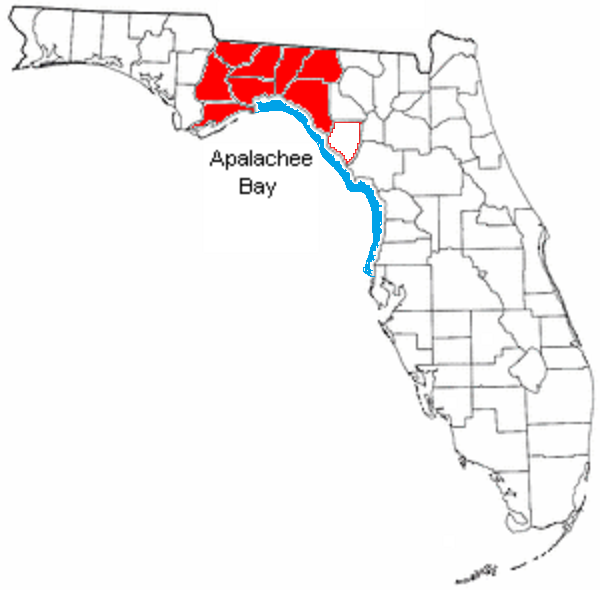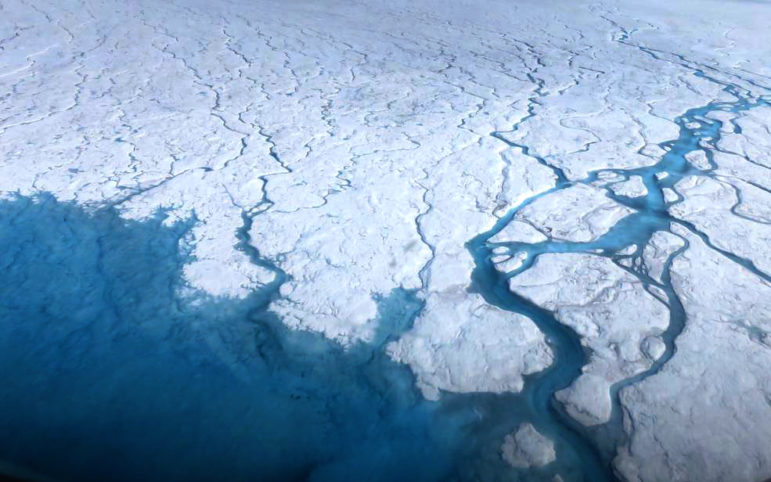TWH – Like Janus, climate change has presented two faces. One face threatens known ancient sites. The other face reveals new findings from the past.
Rising sea levels threaten to erode coastal sites before excavation can occur. Rising temperatures melt glaciers and permafrost, exposing buried organic matter and exposing it to new threats. Yet rising temperatures in 1991 allowed the natural mummy of Ötzi, the Copper Age hunter, to emerge out of the Alpine ice. Paradoxically, climate change presents threats and opportunities.
Knowledge of material remains of ancient intact Pagan cultures helps modern Pagans to understand those cultures. Indigenous sites provide the descendants of those cultures with the physical links to their pre-contact past.
Recent articles have reported on threats to two very different archaeological sites. Rising sea levels threaten Native American sites in the Big Bend area of Florida, and rising temperatures threaten archaeological sites in the Arctic. Climate change threatens numerous other sites around the globe. The number of those threatened sites will only increase given projections from climate scientists. Increasing the challenge is that many of the areas most threatened have access to far fewer resources than the Arctic or the Big Bend Region of Florida.
Threats to Native American sites on the Gulf Coast of Florida
The scientific website Phys.org reported about threats to Native American heritage sites in the Big Bend region. The Big Bend refers to that place on the Gulf coast where Florida’s horizontal panhandle meets the peninsula.

Map the Big Bend Coast of Florida in blue, and the Big Bend region in red [Image credit: Donald Albury – WikiCommons]
Currently, 1,539 known archaeological sites are at, or below, sea level in Florida. By 2100 with a 1m (3.28 ft.) rise in sea level, the number of sites submerged will increase to about 6,820. When those sites disappear, the descendants of those cultures will lose those physical connections to their past.
The Big Bend contains many Native American pre-contact sites. These sites include the Mound Field, Bird Hammock, and Garden Patch sites. The barely studied Garden Patch site, a Middle Woodland culture (100 to 500 C.E.), consists of a six shell mound complex. Rising saltwater from the Gulf of Mexico threatens that site. The incursion of saltwater will kill the vegetation whose roots bind the soil. Once that root structure goes, erosion increases.
Threats to archaeological sites in the Arctic
Antiquity Publications of Cambridge University reported that at least 180,000 archaeological sites exist in the Arctic Region that covers Alaska, Greenland, the northern areas of Canada, Greenland, Russia, and Norway.
The frigid, wet climate of the Arctic inhibits microbes from damaging organic material. When soil remains frozen for years, it becomes permafrost. That frozen soil acts like the freezer in a refrigerator, preserving organic matter from decay.
As the planet warms, that permafrost shrinks. This shrinkage exposes organic matter to microbes. That exposure, in turn, causes decay.
In the Arctic, climate change takes many forms. Permafrost melts. Coastal areas erode, as sea level rises. As the Arctic warms, glaciers melt and disappear. Plants and trees begin to grow. With more plants and trees, wildfires occur more often. Major storms increase in frequency. As Arctic waters lose ice cover, travel to the Arctic becomes easier. Tourism and commercial expansion increases.

2015 image of glacier ice melt in Greenland [Image credit: NASA Goddard Space Flight Center]
Northwest Alaska and the western Canadian Arctic have shorelines prone to erosion. In 1949, the Esook Trading Post on the northern Alaskan coast had five structures and one cemetery. By 1981 only one structure remained. Between 1984 and 2002, annual erosion averaged a catastrophic 8.8 m (28.87 ft.). Today, no structures remain. The sea had claimed the cemetery as well.
Kokruagarok, Alaska, a hunting and fishing village had many structures in 1951. From 1955 to 1979 erosion averaged 3.2 m (10.5 ft.) per year. From 1979 to 2002, erosion averaged 5.1 m (16.7 ft.) per year. During this period the entire site vanished beneath the waves.
Protection of the Arctic’s archaeological sites presents difficulties. Science has to develop new methods to locate sites in remote areas. After a threat has been found, someone has to monitor it for potential damage.
Scientists are training local residents to become monitors. They use their cell phones to record and transmit their monitoring. Locals could also be trained to mitigate some damage when it occurs. No one, however, can mitigate catastrophic erosion, like that at the Esook Trading Post from 1984 to 2002. The northern coasts of Alaska, western Canada, and parts of Siberia still need immediate preventive action.
Climate change linked archaeological findings
Climate change has revealed other archaeological finds besides the natural mummy of Ötzi. In 2003, a wildfire in Shoshone National Forest in Wyoming burned acres of ground cover. With that cover gone, people could see, for the first time, the remains of previously hidden Native American villages. In 2006, the Little Venus fire also burned through parts of the Shoshone National Forest. After that fire, archaeologists compared the number of pre-fire artifacts found with those found post-fire. That fire resulted in a 2000% increase in the number of artifacts found. The 2018 European drought revealed the outlines of many unknown buried structures in Britain and Ireland.
Natural vs. accelerated climate change
Heinrich Schliemann discovered the ruins of Troy in the mound of Hisarlik, 6.5 km (4.04 miles) from the Aegean Sea. In the Iliad, however, Troy was a coastal city. Coastlines have always changed over time.
The climate has always changed over time as well. The Roman Warm Period (250 B.C.E. to 400 C.E.) roughly matches the lifespan of the Late Roman Republic/Empire. The Medieval Warm Period (950 to 1250) roughly matches the High Middle Ages. The Little Ice Age (1250 to 1850) followed the Medieval Warm Period.
This accelerated rate of climate change is consistent with the greenhouse theory of increased carbon burning leading to climate change. In 1896, Svante Arrhenius predicted global warming linked to increased carbon dioxide in the atmosphere. Scientists underscore that the burning of carbon fuel that drove the Industrial Revolution has fostered the accelerated pace of climate change and global warming. Change is occurring more rapidly and it is both exposing the archeological past as well as destroying it.
The Wild Hunt is not responsible for links to external content.
To join a conversation on this post:
Visit our The Wild Hunt subreddit! Point your favorite browser to https://www.reddit.com/r/The_Wild_Hunt_News/, then click “JOIN”. Make sure to click the bell, too, to be notified of new articles posted to our subreddit.
